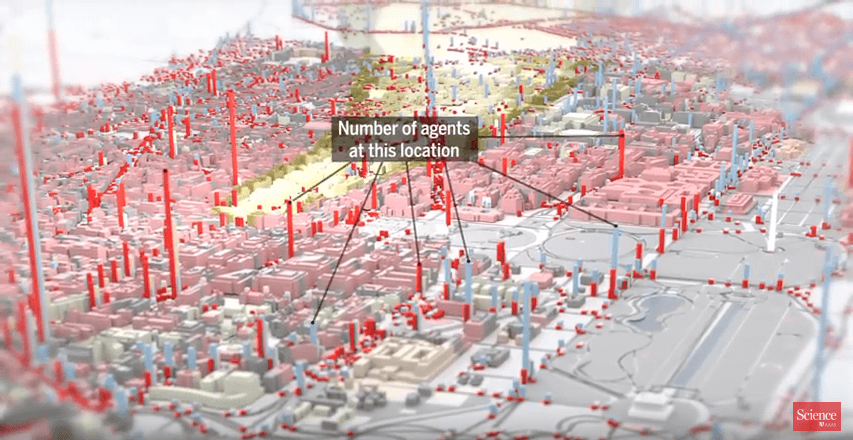Beyond imagining
By Thomas Gaulkin | April 20, 2018

“Beyond Imagining.” That’s the promotional tagline for The Day After, the apocalyptic 1983 movie that helped scare Ronald Reagan into reducing the US nuclear arsenal. The enormity of destruction from a nuclear bomb can be difficult to grasp, but science is now helping people understand the effects in ways that Hollywood can’t.
One of the Bulletin‘s most popular articles asks: “What would happen if an 800-kiloton nuclear warhead detonated above midtown Manhattan?” And you can now visualize the impact of nuclear blasts as easily as getting directions on Google Maps.
Most of these examples look at the big-picture of a nuclear explosion to represent the aftermath. But a story (and video) published by Science describes a new type of incredibly detailed simulation being used in conjunction with the US government’s National Preparation Scenario #1 (NPS1), which proposes a hypothetical nuclear attack near the White House in Washington D.C. The new simulation uses an “agent-based” model, which, like a nuclear powered version of The Sims videogame, relies on massive computing resources to predict the specific behavior of hundreds of thousands of imaginary city residents and workers—basically tracking how every single survivor might react to a bomb blast based on their particular backgrounds, relationships, and psychological profiles.
With equivalent detail for infrastructure like roads, cell towers, and hospitals, models like these can give planners extraordinary insight into the consequences of a nuclear attack. For instance, the new NPS1 simulations map the ways that setting up emergency cell service early enough during a crisis can radically change where people run—if someone can reach their family by phone, they might hide instead of risking radioactive fallout to find them.
For now, the models used in the NPS1 are primarily helping US government agencies coordinate emergency response, both to nuclear attacks and to other disasters like extreme weather and disease outbreaks. But, the researchers quoted in the Science story suggest, simulations like these may soon help individuals decide how to respond on their own, given their particular situation and needs. A version of an agent-based model might find its way onto your smartphone too someday, right next to your map app and your Sims game.
Publication Name: Science Magazine
To read what we're reading, click here
Together, we make the world safer.
The Bulletin elevates expert voices above the noise. But as an independent nonprofit organization, our operations depend on the support of readers like you. Help us continue to deliver quality journalism that holds leaders accountable. Your support of our work at any level is important. In return, we promise our coverage will be understandable, influential, vigilant, solution-oriented, and fair-minded. Together we can make a difference.
Topics: Nuclear Risk, Nuclear Weapons, What We’re Reading















